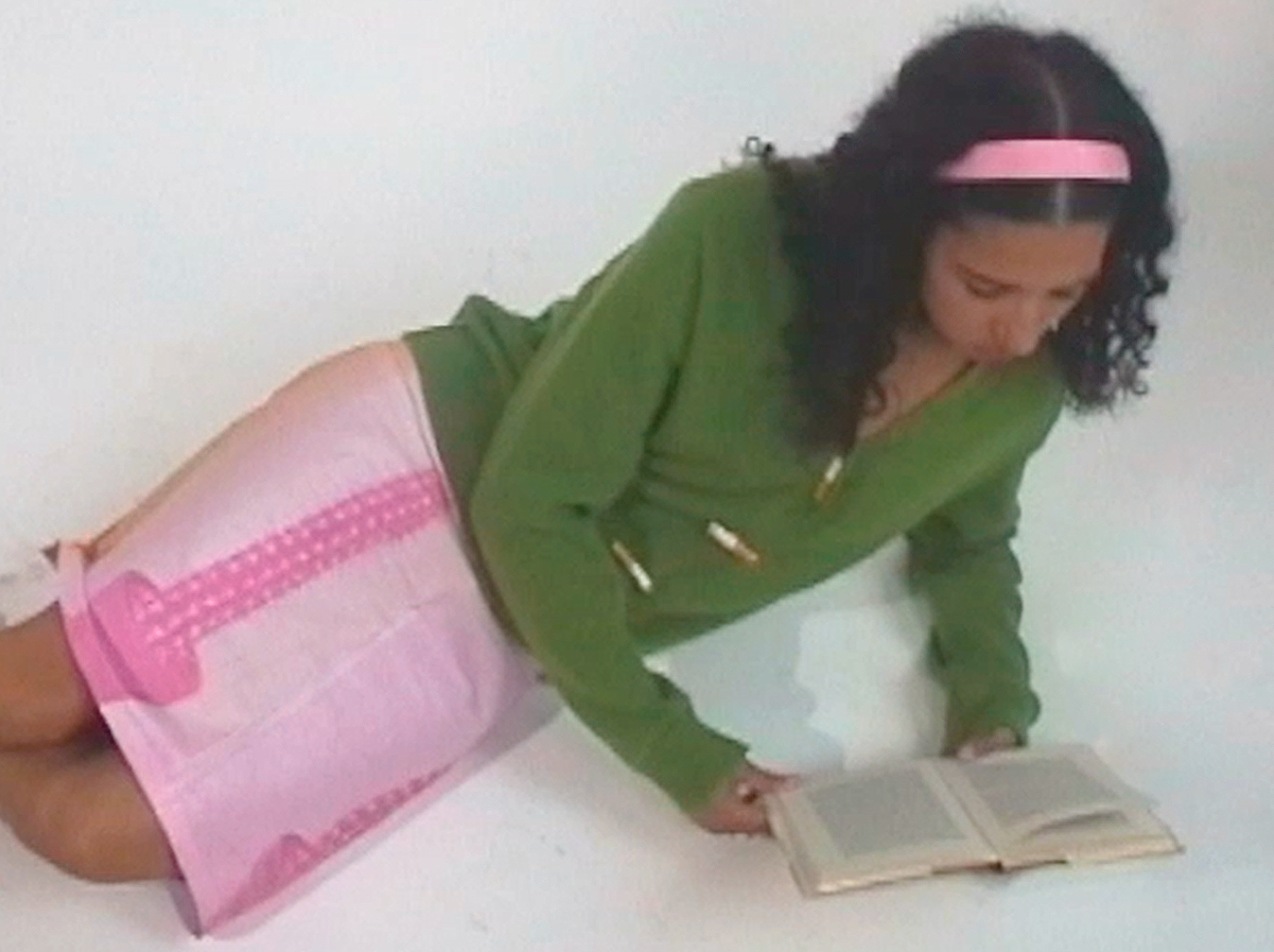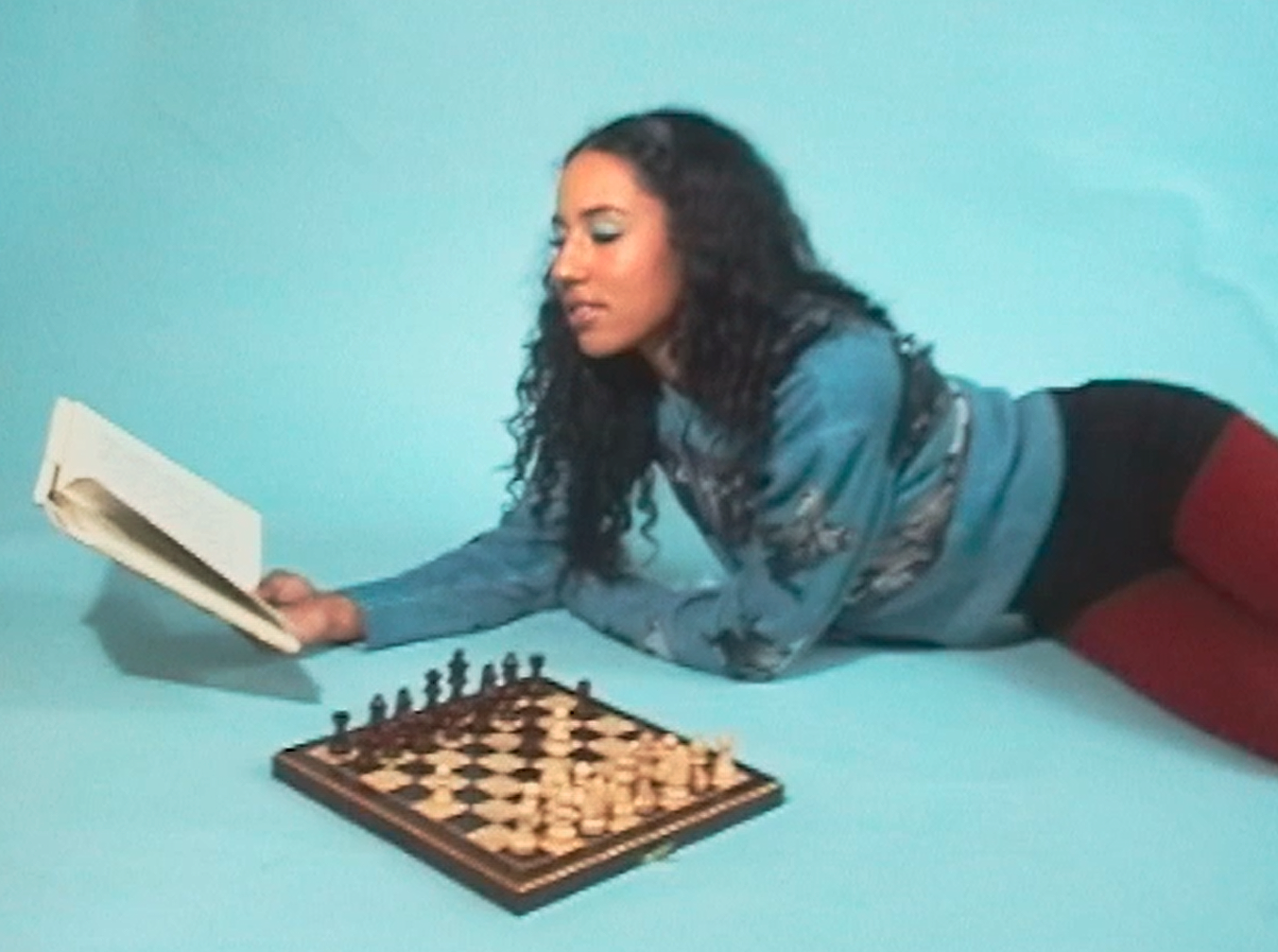HADES on Taking Fashion Less Seriously, Classism in Discussions About Taste and the Importance of Outward Expression
Words: Lauren O’Neill
Make it stand out
In a world of quiet luxury, we’re celebrating bad taste with HADES. The cult clothing brand’s new Eccentrics collection is a cheeky take on avant-garde fashion. The line includes a cigarette cardigan with hand painted ciggie buttons, a cheeky phallic skirt featuring a suggestive cactus print, and an ‘I’m Bored’ skirt that says it as it is - we’re bored with the current state of pared back, clean girl styles.
Cassie Holland, one half of the sister duo that founded HADES in 2016, tells us that the spunky new designs are inspired by counter culture ideas, radical figures and history. Think Little Edie pirouetting in a headscarf through her living room, or the fur-draped Josephine Baker, or the essence of Isabella Blow’s fascinators. Our brand spanking new interview and editorial explores all things kitsch with a brand that prioritises humour in their output.
How does HADES conceptualise “bad taste”? What does it mean to you and how does it manifest in your designs?
When we were designing the collection, we were thinking of the words of John Waters: “Have faith in your own bad taste.”, this is a powerful statement as it runs contrary to the governing orthodoxies of fashion, which posit that the purpose of the clothes you wear is to exhibit good taste (whatever that means).
Since fashion is art, it should act as a tool for reimagining our collective reality, it should enrich our lives and aid us in self-expression - anything that pursues these goals cannot be bad taste.
The Eccentric's collection takes inspiration from people who wouldn’t necessarily always be considered traditional fashion muses, like Josephine Baker, Little Edie, and Isabella Blow. Why were you enthused by these women in particular?
Fundamentally we are drawn to their characters and their human weaknesses and foibles. These women’s signature styles and stylistic inventions are derived from their flaws and eccentricities. Edie wore head scarves because she had lost her hair, either due to alopecia or because she set her own hair on fire (her cousin John Davis says he witnessed Edie climbing a tree and burning her hair off after a failed romance). Isabella Blow wore sculptural hats to transfigure her facial appearance, as she considered herself unattractive. All three embody a dualism: vulnerability and power, they had a genius in their clothes and style, which acted as an exaltation, a carapace - their outer expression was in close dialogue with their inner world…This is what fashion is all about!
More widely, what’s the value of looking for inspo in unusual places?
To seek out thinking, truths, ideas, suffering and mutuality that is not reflected and valued in the mainstream. We always find interesting inspiration in the heterodox.
“Taste” is often a very classed (and when weaponised, classist) standard, particularly in fashion. How do HADES’s designs react against this?
Taste is absolutely a form of class performance: so-called ‘good taste’ is defined, imposed and propagated from above. As Pierre Bourdieu writes in Distinction, “Taste is first and foremost distaste, disgust and visceral intolerance of the taste of others.”, it is a form of cultural capital, used to legitimise class inequality.
There are taste-makers in the fashion and media world who set the taste signifiers, these are very often derived from their class backgrounds, and they must be known and embodied to succeed in that closed off world. In Britain, a disproportionate number of creatives come from the same privileged class; this begets an elitist, exclusionary set of rules; It also produces a homogenised, impoverished culture.
Our designs don’t react to the idea of ‘taste’, but we do resist it. We design from instinct and produce in small volumes, so when we want to release a design that we suspect isn’t necessarily commercial, we are able to do so. Whilst we need to achieve a certain amount of commercial success to make HADES viable, our priority is creative freedom.
An embrace of “Bad taste” doesn’t mean poor craftsmanship, as HADES proves time and again – in the Eccentric’s collection, for example, you have cardigan buttons crafted in Birmingham’s famous Jewellery Quarter. Do you think it’s subversive to ensconce so-called “low culture” in time-honoured manufacturing techniques? What’s the value of doing that?
Yes, I think that’s right - the dichotomy between bad taste and elegant execution interested us. We wanted The Eccentric’s Collection to explore the idea of beauty and ugliness, and we wanted to dissent from the pejorative ideas around bad taste by creating pieces that would last a lifetime.
The value for us in collaborating with local craftspeople and using traditional techniques is to hopefully contribute, in a small way, to the survival of historic crafts that are at risk of dying out in Britain. Most of the old jewellery workshops in the jewellery quarter in Birmingham have not been protected by government policy , this is also true of knitwear; As a consequence, skills and knowledge of time-honoured manufacturing techniques are dying out. Young people are not entering the trades as they once did, when we speak to older craftspeople, they tell us that it was apprenticeship schemes and government supported programmes that got them into the industry in their youth. Creating our garments in collaboration with craftspeople means that we can support ethical manufacturers to provide meaningful jobs and fair pay.
You’ve said that the Eccentric’s Collection is “a riposte to the uninteresting trend of quiet luxury and the tyranny of good taste.” Can you say more about your resistance to the quiet luxury trend? What about it rubs you the wrong way?
The trend is so bland and rigid that it lacks any intimacy or joy, you can’t make any mistakes in it, you can’t go wrong. It is antithetical to fashion as a form of creative expression because it is a trend that takes individuals further away from their own taste.
The cigarette cardigan buttons are a particular highlight of the collection. What inspired those? It feels like smoking is back…
The cigarette cardigan is from our Carrington collection, the reaction to this knit has been really positive. I can’t recall the exact moment of inspiration but we are always working to create new buttons in diverse materials, sometimes we have a very specific concept and other times we’ll just play in an unplanned way. The cigarette buttons are in keeping with the manifesto of the Surrealists, who are a recurrent influence on HADES; we like to emulate their experimentations with transposing everyday items to produce an outlandish effect. Regarding the return of smoking, to be clear, we aren’t advocating for this, ha! This isn’t our area of expertise, but certainly smoking seems to have a symbolic significance in our political moment, perhaps its revival is in response to that.
Photography and Creative Direction: Charlotte Amy Landrum | Model: Stella Murphy | Makeup: Georgia Hope | Makeup Assist: Gabbie Lee |







